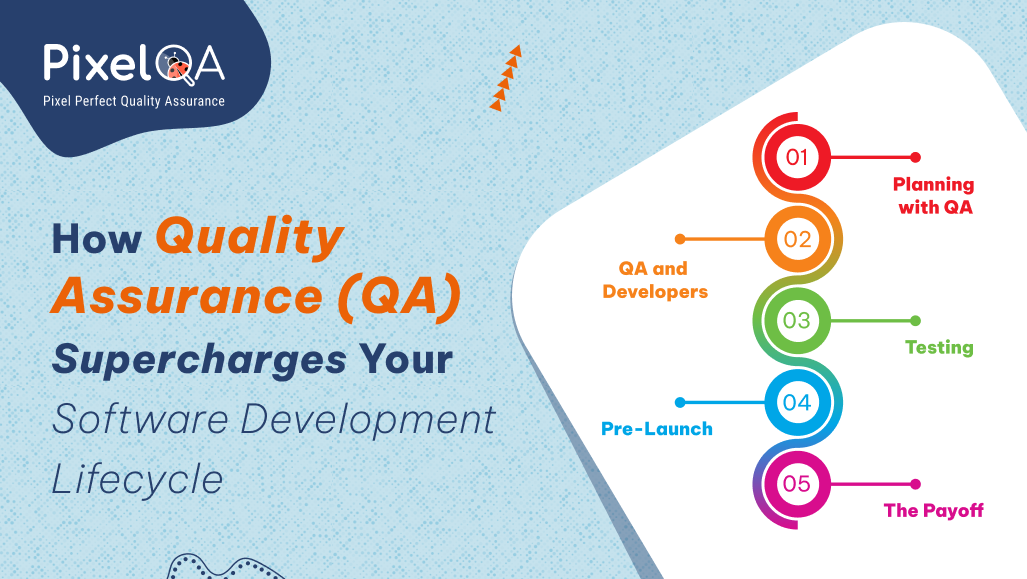
Believe your flashy code is production-worthy? Without ironclad Quality Assurance (QA). The most beautiful app can fail under real-world pressure. Crashing on opening, spilling data, or infuriating users into uninstalls.
Manual QA testing is not an ultimate backup plan. It's the strength of bulletproof software, interwoven into each step of the Software Development Lifecycle. For small startups and tiny teams, bypassing it is not a choice, it's the difference between a product that succeeds and one that meets its demise on arrival. This is how QA makes development from risk to reliable.
What QA Does in the Software Development Lifecycle
Quality Assurance (QA) is more like a safety net, but intelligent. Rather than simply identifying defects, it avoids them by influencing the way software is developed. It's the difference between proofreading a novel once it's been printed and having an editor from the start of draft one.
The Software Development Lifecycle (SDLC) is the map teams use to develop, build, and deploy software. When QA gets on board early, not only at the testing phase, time, money, and sanity are saved.
1. Planning with QA: Nip Problems in the Bud
Ever built something only to realize, “Wait, this isn’t what we wanted”? QA avoids that. Before a single line of code is written, QA helps:
- Set clear quality benchmarks. Will the app handle 10,000 users at once? Does it need to pass security audits? QA turns vague goals into measurable standards.
- Build a test strategy. This is the playbook for what to test, when, and how. No more guessing if you’ve checked everything.
Real-world example: A bakery’s online ordering system needs to process payments flawlessly. QA defines tests for payment gateways before development starts, so the team doesn’t waste weeks fixing errors later.
Pro Tip: Teams that skip QA planning often end up firefighting post-launch. Don’t be that team.
2. QA and Developers: The Dynamic Duo
Here’s a myth - QA and developers work separately. No sir. The best software comes from constant collaboration.
- Code reviews: QA engineers and developers review code together, catching problems early. It's like having a second pair of eyes on your blueprints.
- Unit testing: QA makes sure developers test small pieces of code (such as "Add to Cart" buttons) correctly. Catch a bug here, and you avoid 10 downstream headaches.
- Tool talk: Platforms like GitHub let QA comment directly on code. Less back-and-forth, faster fixes.
Pro Tip: Daily standups with QA and devs keep everyone aligned. Fewer surprises, smoother progress.
3. Testing: Where QA Goes to Work
This is QA’s spotlight moment, but not all testing is created equal. Smart teams mix:
- Functional testing: Does the login page actually log people in?
- Performance testing: Can the site survive the Black Friday sale traffic?
- Security testing: Are hackers locked out? (Hint: Hope so.)
- UX testing: Is the app intuitive, or does it feel like solving a Rubik’s Cube?
Automation vs. Manual: Automated tools (such as Selenium) speed through redundant tests (such as verifying 50 versions of browsers). Manual testers find edge cases, such as what if a user copies emojis into a credit card field.
Pro Tip: Balance automation (speed) with manual testing (human intuition).
4. Pre-Launch: QA’s Final Safety Check
Before hitting “go,” QA runs:
- Smoke tests: A 10-minute gut check. Does the core functionality work? If not, abort launch.
- Rollback plans: Because sometimes, things break. QA ensures you can revert to the last stable version fast.
Post-launch, QA isn’t done. They monitor:
- User complaints (“Checkout crashes on iPhones!”)
- Performance dips (slow load times, lead to lost sales)
- New test cases to prevent repeat bugs
Example: A fitness app launches, and QA notices GPS tracking fails in rural areas. They update tests to cover weak signal scenarios.
5. The Payoff: Faster, Cheaper, Better Software
Teams that embed QA throughout the SDLC see:
- Fewer defects: Fixing a typo in requirements costs pennies, fixing it in code costs dollars.
- Faster releases: No last-minute scrambles to patch bugs.
- Lower costs: IBM found that catching a bug post-launch costs 30x more than fixing it early.
- Happier teams: Devs and QA speaking the same language lead to less friction.
Pro Tip: Start QA on Day 1 of your next project. The earlier, the cheaper.
The Conclusion
Quality Assurance services isn’t about ticking boxes before launch. It’s about making quality everyone’s job, at every stage. When QA and developers collaborate from the start, you don’t just build software, you craft it. Ready to build software that doesn’t make users groan? Get our experts at PixelQA involved in your next planning session.

